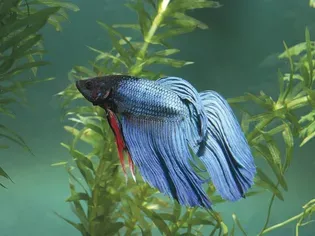White Spot Disease in Saltwater Fish
Updated on 04/26/24

White Spot Disease in Saltwater Fish: A Comprehensive Guide to Prevention, Diagnosis, and Treatment
Introduction
White spot disease, also known as ich or ichthyophthirius, is a highly contagious parasitic infection that affects saltwater fish. This common ailment is caused by a protozoan parasite called Ichthyophthirius multifiliis and manifests as white spots on the fish's body, fins, and gills. Left untreated, white spot disease can be fatal to your aquarium inhabitants.
Causes and Transmission
Ichthyophthirius multifiliis, the parasite responsible for white spot disease, is present in most saltwater environments. Healthy fish with robust immune systems can typically resist infection; however, stress, injury, or overcrowding can weaken their defenses and make them susceptible to the parasite.
Transmission occurs when a fish comes into contact with infected water or another infected fish. The parasite forms small white cysts (trophonts) on the fish's skin and gills. These cysts eventually burst, releasing hundreds of infective tomites that can rapidly spread the infection throughout an aquarium.
Symptoms of White Spot Disease
Identifying white spot disease is crucial for prompt treatment. Common symptoms include:
* White spots: Small, white, raised spots (trophonts) on the fish's body, fins, and gills. These spots may be scattered or concentrated in certain areas.
* Flashing: Fish repeatedly rubbing against objects in the tank, trying to dislodge the parasites.
* Clamped fins: Fish holding their fins close to their bodies, indicating discomfort or distress.
* Lethargy: Fish becoming less active and spending more time hiding or resting.
* Loss of appetite: Fish refusing to eat or eating less than usual.
Lifecycle of the Parasite
Understanding the lifecycle of Ichthyophthirius multifiliis is essential for effective treatment:
* Trophont: The visible white cyst on the fish's skin.
* Tomite: The infective stage of the parasite released when the trophont bursts.
* Theront: The free-swimming stage that infects new fish.
* Tomont: The stage where the parasite divides within the trophont.
Diagnosis
White spot disease is often diagnosed based on visual observation of the characteristic white spots. However, confirmation can be obtained through microscopic examination of a skin scrape or gill biopsy.
Treatment Options
Treating white spot disease effectively requires a comprehensive approach:
* Medication: Various medications are available to treat white spot disease, including copper-based treatments, formalin, malachite green, and potassium permanganate. The best medication and dosage should be determined by a veterinarian or experienced hobbyist.
* Heat treatment: Raising the aquarium temperature to 84-86°F (29-30°C) can accelerate the parasite's lifecycle, causing the trophonts to burst sooner and making them more susceptible to medication.
* Salt baths: Adding aquarium salt (not table salt) to the tank can create an environment that is less favorable for the parasite.
* UV sterilization: Ultraviolet (UV) sterilizers can kill the free-swimming theront stage of the parasite.
Prevention
Preventing white spot disease is crucial for maintaining a healthy saltwater aquarium:
* Quarantine new fish: Newly purchased fish should be quarantined for at least 4 weeks before being introduced into the main tank. This allows time to observe for signs of disease and treat if necessary.
* Maintain water quality: Regular water changes, filtration, and aeration help maintain a healthy environment that discourages parasite growth.
* Avoid overcrowding: Overcrowding can stress fish, making them more susceptible to disease.
* Stress reduction: Providing ample space, hiding places, and a balanced diet can help reduce stress levels in fish.
* Monitor fish health: Regularly observe your fish for any changes in behavior or appearance. Early detection and treatment are crucial for successful management of white spot disease.
Conclusion
White spot disease is a serious parasitic infection that can have detrimental effects on saltwater fish if not treated promptly. By understanding the causes, symptoms, and treatment options, you can effectively prevent and manage this common ailment, ensuring the health and well-being of your aquatic pets. Remember, prevention is key, and a healthy, well-maintained aquarium will go a long way in keeping your fish happy and disease-free.
Explore More Pets

Freshwater Aquarium Filters
How to Deal With Cloudy Aquarium Water

Saltwater Aquarium Filters
How Do You Remove Chloramines From Tap Water?

Freshwater Aquariums & Habitat
Can I Keep My Koi Fish Inside?

Saltwater Aquariums & Habitat
14 Best Floating Plants for Your Aquarium

Freshwater Fish Health
How to Treat Ich on Freshwater Fish

Saltwater Fish Health
Fin Rot in Aquarium Fish

Freshwater Aquarium Filters
How to Do Aquarium Water Changes

Saltwater Fish Health
How Do Fish Get Parasites?